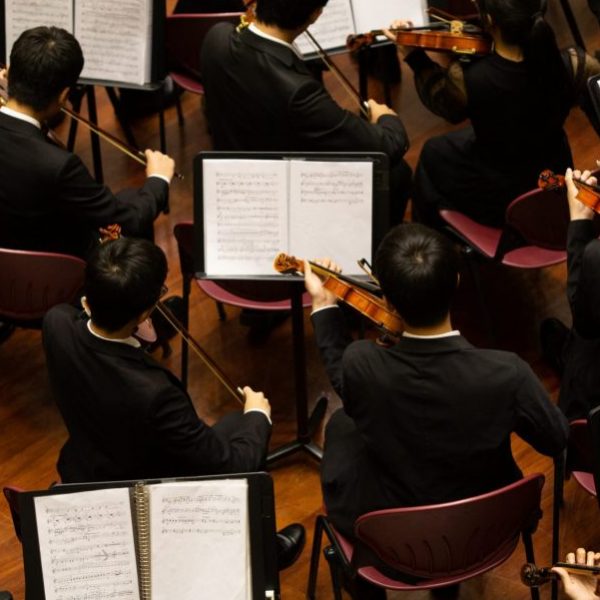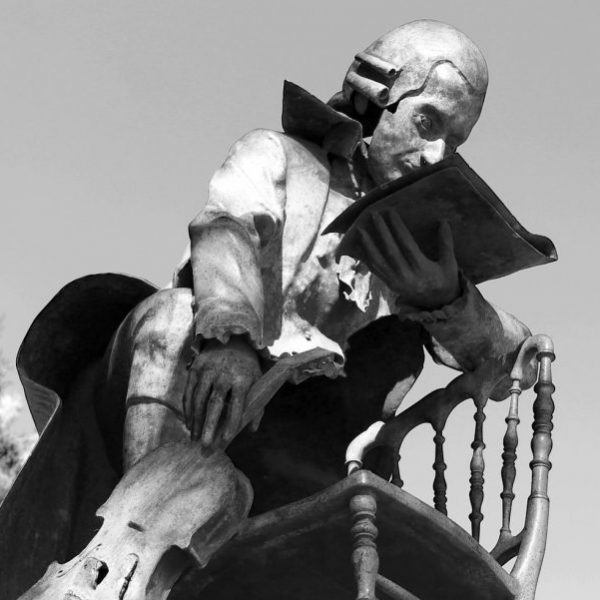The Historical Role of Beethoven’s Piano Sonatas
Charles Rosen—
Proust’s grandmother was a woman of extremely modest, unpretentious demeanour, who never ventured to contradict anyone’s literary judgement:
But on matters of which the rules and principles had been taught her by her mother, on the way to cook certain dishes, to play the sonatas of Beethoven, and to receive guests graciously, she was certain of having a just idea of perfection and of discerning whether others approached closely or not. For all three things, besides, the perfection was almost the same: it was a sort of simplicity of means, of sobriety and of charm. She reacted with horror at putting spices in a dish where they were not absolutely needed, playing with affectation and too much pedal, or going beyond the bounds of what was perfectly natural when “receiving” and speaking of oneself with exaggeration. From the first mouthful, the first notes, a simple letter, she claimed to know if she was dealing with a good cook, a real musician, a well-bred woman. “She might have much more technique than I do, but she lacks taste, playing so simple an andante in such a grandiloquent manner.” . . . “She might be a learned cook, but she does not know how to make a steak with potatoes.” Steak with potatoes! the ideal competition piece, difficult because of its simplicity, a sort of Sonata Pathétique of cuisine. . . .
Mais sur les choses dont les règles et les principes lui avaient été enseignés par sa mère, sur la manière de faire certains plats, de jouer les sonates de Beethoven et de recevoir avec amabilité, elle était certaine d”avoir une idée juste de la perfection et de discerner si les autres s’en rapprochaient plus ou moins. Pour les trois choses, d’ailleurs, la perfection était presque la même: c’était une sorte de simplicité dans les moyens, de sobriété et de charme. Elle repoussait avec horreur qu’on mît des épices dans les plats qui n’en exigent pas absolument, qu’on jouât avec affectation et abus de pédales, qu’en “recevant” on sortît d’un naturel parfait et parlât de soi avec exagération. Dès la première bouchée, aux premières notes, sur un simple billet, elle avait la prétention de savoir si elle avait affaire à une bonne cuisinière, a un vrai musicien, à une femme bien élevée. “Elle peut avoir beaucoup plus de doigts que moi, mais elle manque de goût en jouant avec tant d’emphase cet andante si simple”. . . . “Ce peut être une cuisinière très savante, mais elle ne sait pas faire le bifteck aux pommes.” Le bifteck aux pommes! morceau de concours idéal, difficile par sa simplicité même, sorte de “Sonate Pathétique” de la cuisine. . . .
Proust’s comedy sets the Beethoven piano sonatas in their proper place as the great representative of Western culture in the upper middle-class household from 1850 almost to our day, as much a part of civilized life as entertaining guests and family dinners. Great painting was experienced in museums; reading poetry and novels were generally individual rather than communal activities within the family; the theatre and the dance existed only outside the home, like symphonies and operas. For the children of a moderately privileged class of society, however, learning to play the piano came second – even if a somewhat distant second – only to learning to read. Particularly for young women, being able to play the piano was essential to their self-respect, affirmed their place in society.
For music-making at home, the most prestigious form of serious music was the Beethoven piano sonata. Except for The Well-Tempered Clavier, the works of all other composers could seem light-weight, and Bach was too academic, too learned, to sustain the rivalry of the drama and emotion of the Beethoven sonata. Even more than the string quartet, the sonata was, with a few exceptions, the province of the amateur musician. We may profitably invert Proust’s metaphor: the Beethoven piano sonatas were the steak and potatoes of art music, the proof that one had access at home to the greatest masterpieces of music.
They were also the bridge from the music made at home to the music of the concert hall, the staple of the serious recital programme, the way for the professional concert pianist to demonstrate his pretensions to the highest musical culture. There was nothing meretricious about the Beethoven sonatas: they were not used – or should not be used, it was felt – to dazzle the listener with the performer’s technique, and they betrayed none of the deplorably morbid and effeminate character of the works of the great Romantics, Chopin, Schubert, Mendelssohn and Schumann. They had gravity as well as passion and humour. They guaranteed contact with the sublime.
They also reached into the future. For all their classic status, they retained some of the controversial character that had greeted their initial appearance before the public. Early in the twentieth century the most famous Viennese teacher of piano, Theodor Leschetizky (his pupils numbered Artur Schnabel, Ignaz Paderewski and Ossip Gabrilovich), was still advising his students against playing the late sonatas. Of all Beethoven’s works, only the last quartets were as disconcerting to the concert audience. Paradoxically, the sonatas remained a model for the avant-garde even as they became a model for the conservative critic. In our time, they can still stimulate experiment and individuality, encourage intransigence.
The double nature – private and public – of the piano sonatas is the essence of their historical role. They not only submitted to the radical changes in the relations of music and society, they also helped to shape those changes.
From Beethoven’s Piano Sonatas by Charles Rosen. Published by Yale University Press in 2020. Reproduced with permission.
Charles Rosen (1927–2012) was an internationally respected pianist. A pupil of Moriz Rosenthal, he has performed and recorded a wide repertoire from Bach to Pierre Boulez. His prize-winning books include The Classical Style, The Romantic Generation, Romantic Poets, Critics and Other Madmen, and Critical Entertainments.
Further Reading:



























